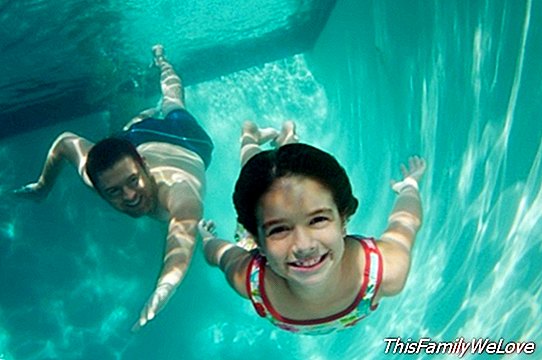Drownings, second cause of accidental death in children

Summer would not be the same without the hours on the beaches and the pool playing and having fun. So that nothing spoils a holiday that can be perfect, it is better to follow precautions toVitar drowning, which is the second cause of accidental death (after traffic accidents) in children.
The problem is not small. As reported by the World Health Organization (WHO), in 2011 it is estimated that more than 359,000 people drowned, "what makes it a great public health problem around the world ", they say.
In the little we have been in summer, several children have died in Spain, which alerts us to the importance and seriousness of these events. Extend the security measures, know what to do in case of drowning and of course, educate our children well so that they do not do "nonsense" when they are in the water is essential.
"The adequate surveillance of any child who is near or inside swimming pools, lakes, bathtubs, etc., the presence of lifeguards and children learn to swim from 4 years of age are essential "to prevent drowning in children, as remember from the Spanish Association of Pediatrics in Primary Care.
Swimming Pool Safety Regulations
The great risk of Drowning It means that not only parents have to pay close attention when we go to the beach or the pool, but in Spain there is also a regulations in force that establishes technical-sanitary criteria necessary for swimming pools for public use.
However, it is not in public pools where sThey produce the majority of drowning, but in the family or of neighborhood communities, which are exempt from compliance with security regulations. In this sense, pediatricians ask families to maximize safety when going to pools, although these are single-family. Therefore, it is recommended:
- Put a fence or fence security that has a minimum of 1.2 meters high around the pool, as well as an automatic closing door whose lock is out of your child's reach.
- Consider the possibility of installing a pool alarm or a protective cover, but be aware that these devices do not replace the security fence or supervision by an adult.
- Get all the toys out of the pool when children stop swimming to prevent them from trying to retrieve them when they are not under the supervision of an adult.
- Inflatable devices to float in water, such as lifesavers, floats, rafts and float tubes can provide a false sense of security in the pool and are not effective in protecting a child from drowning. Never use them as substitutes for constant supervision by an adult.
- When you use inflatable pools, empty them completely water they contain as soon as they stop using them.
- Remove access stairs to the pools which are higher than the ground surface when you stop using them.
- If you leave your child with another caregiver, make sure you know all the rules related to the safe use of the pool.
The possibilities of drowning of children and adults
Age is one of the main risk factors, as they explain from the WHO, that they add the time periods in which the children are not well supervised While they are in the pools they can be determinant. "Children under 5 years old they usually have the highest rates of drowning mortality worldwide, with the sole exception of Canada and New Zealand, where the highest rate occurs in adult males, "they comment.
Also, sex seems to have something to do: lmales have a mortality rate that doubles that of women, which makes them especially exposed to the risk of drowning. They also have more risk than women of being hospitalized for non-fatal drowning. "Studies indicate that this is due to greater exposure to water and more risky practices, such as baths alone," they explain from the WHO.
Angela R. Bonachera




